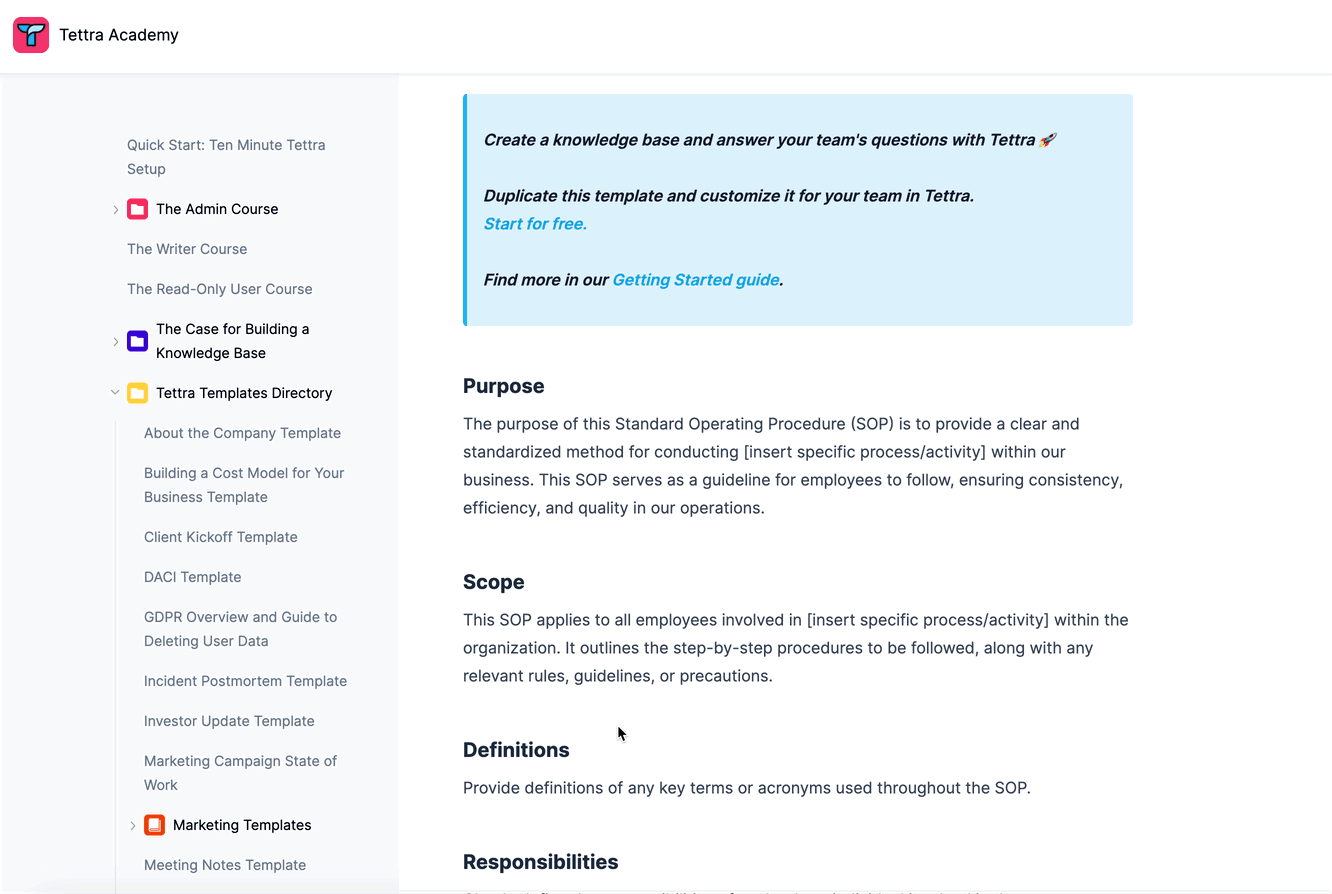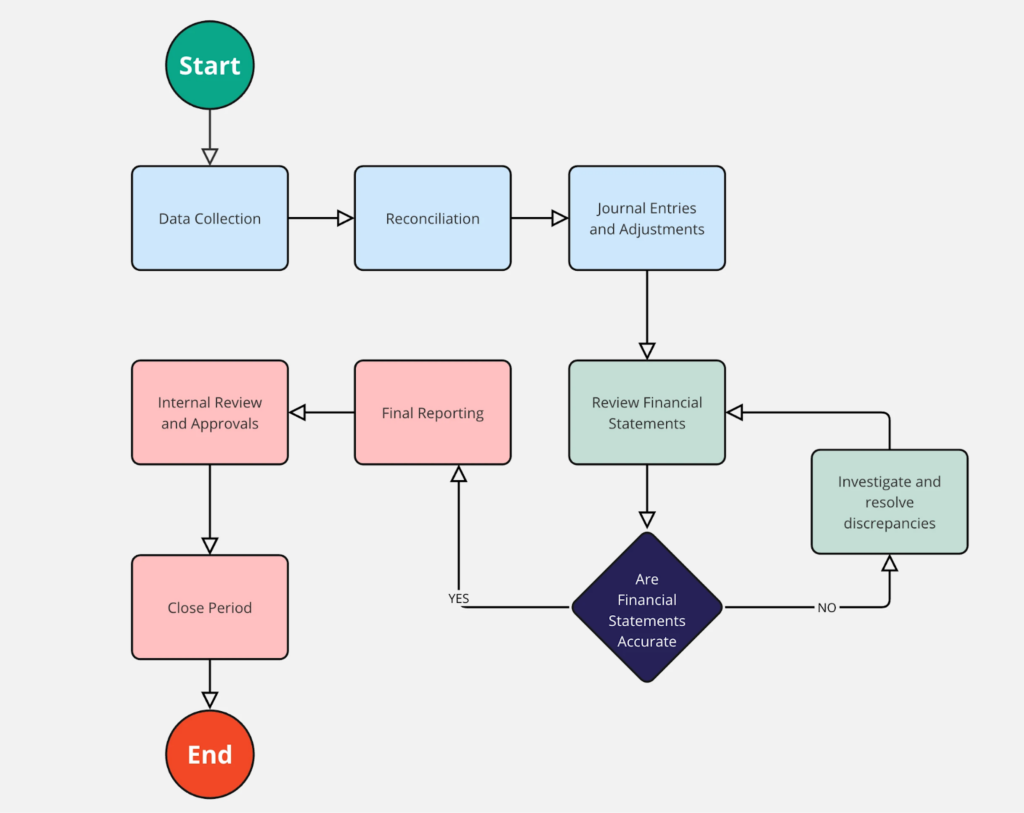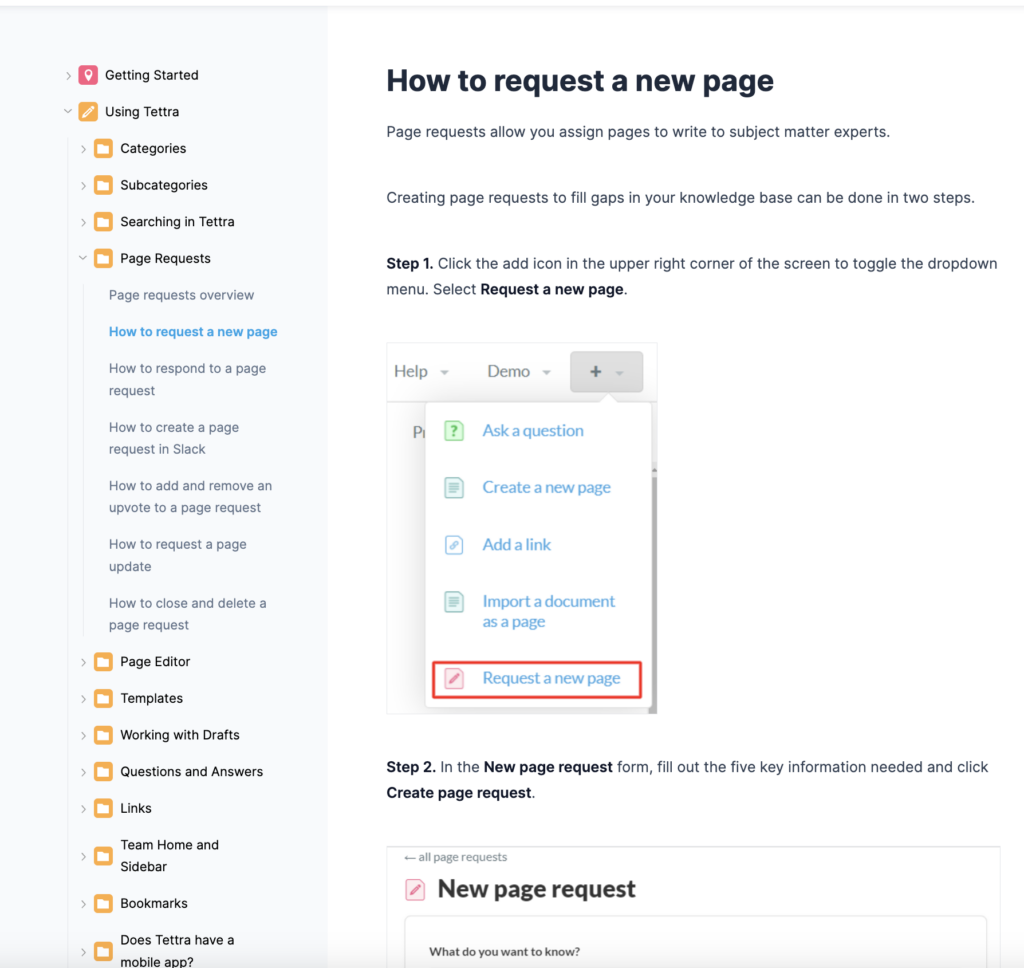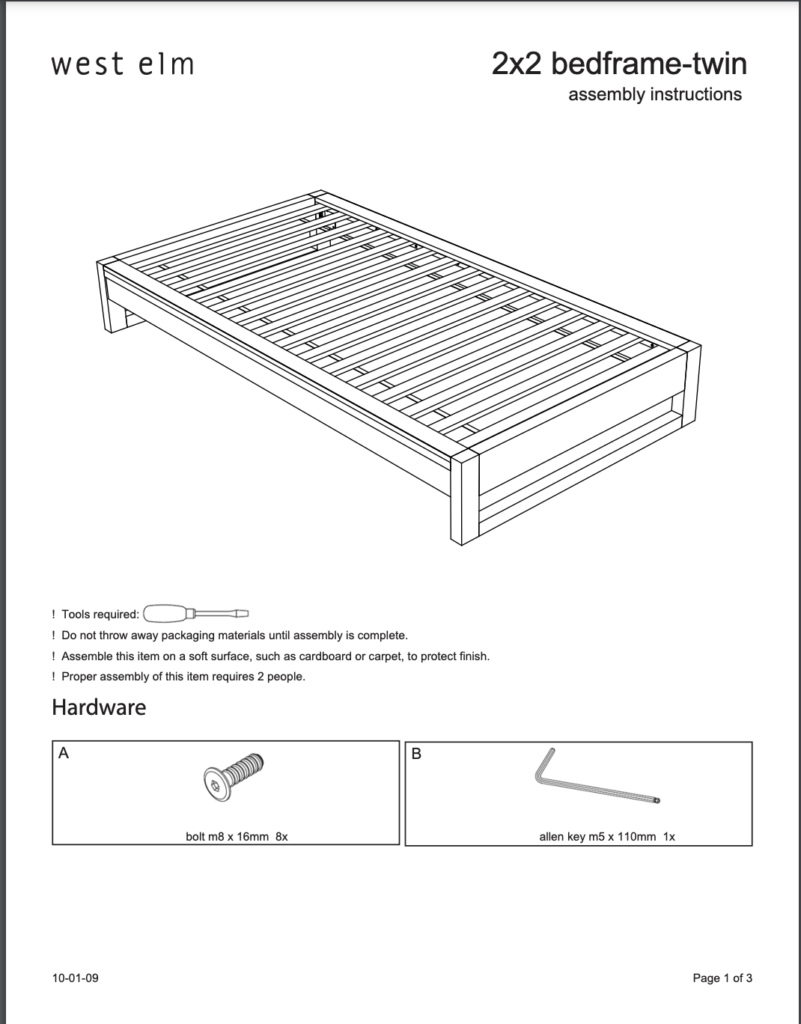Today’s business world is experiencing unprecedented competition. Regardless of industry, companies constantly battle a dozen other businesses for a piece of the market. As a result, staying ahead of the curve is becoming more challenging by the day.
Such a competitive environment highlights the importance of a company’s operational efficiency and makes it a pivotal element for ensuring business success.
Fortunately, that’s also an area that can be easily improved by well-thought-out and uncomplicated work instructions, and that’s precisely what today’s article is all about.
Stay with us as we explore the tremendous importance of practical work instructions, delve into the differences between work instructions and standard operating procedures, and show you how to create effective step-by-step instructions.
What are work instructions?
In simple terms, work instructions are comprehensive, precise, step-by-step guides that explain how to perform a specific activity in a particular job role.
These simple yet pivotal elements ensure work task accuracy and consistency and are the backbone of a company’s day-to-day operations.
In most cases, work instructions are multimodal guides that describe specific business tasks using text, pictograms, images, and videos. That ensures the company’s processes are transparent enough for new employees and short enough for experienced workers to reference when needed.
Why is it important to have effective work instructions?
Achieving better operational efficiency at work isn’t only about streamlining processes with data analytics or writing down work instructions for multiple daily tasks. After all, the quality of work instructions matters a lot, too.
These multimodal guides must be well-written and balance descriptiveness and conciseness. Otherwise, their effectiveness and employee productivity will drop unless these workers are already experts in a particular field.
Well-written work instructions provide detailed steps for various business tasks, significantly enhancing a company’s operational efficiency and employee productivity. They also help ensure all tasks are performed correctly and consistently, drastically reducing the chances of employee errors.
⭐️ Check out these top Tettra templates to start SOPs and work instructions

Key Elements of a Work Instruction
What makes work instruction guides practical and helpful?
Clear and concise language
An organization’s work instruction must be easy to understand to have the desired outcome: increased operational efficiency. These step-by-step guides should use clear and concise language, avoiding jargon and technical terms.
Their sentences mustn’t be overly complex, either, and should instead be made with plain language. Instructions made this way leave no room for misinterpretations and, subsequently, employee errors.
Specific and detailed steps
The usefulness of an organization’s work instructions significantly depends on the instruction’s ability to break down complex employee tasks and lay out the minor elements straightforwardly. Such instructions are comprehensive yet specific, existing as logical sentences anyone can follow, regardless of experience.
This quality is even more vital for highly complex operations, where even minor misunderstandings can have catastrophic consequences. In those cases, providing all the necessary information, including quantities or measurements and precise actions, plays an even more significant role.
Safety precautions and warnings
Regardless of the industry, work almost always involves a dose of risk, be it a risk for employees and customers or a risk of harming your company. That’s why maintaining a safe work environment is paramount, and it’s another area that well-written and effective work instructions can address.
By incorporating warnings and safety precautions into their work instructions, employers can highlight any potential hazards connected to a particular task and dramatically decrease the chances of employees making errors while performing it.
Equipment and materials needed
Imagine following a cake recipe only to realize you don’t have the necessary ingredients in the middle of making it.
The same goes for work instructions, and it’s why having a clear and concise list of the required equipment and materials for a specific task is vital for preparing employees. It allows employees to work in an interruption-free environment and avoid delays.
Time estimates
Work efficiency is all about being on time and completing tasks in the expected timeframe, but what happens if an employee starts a three-hour task an hour before their shift ends?
Or if another employee designates an entire day for only a few short tasks?
Such situations can easily be avoided, and companies can do so by including a time estimate, one of the most vital elements of a well-written work instruction.
By adding realistic timeframes based on practice and experience, your employees will know precisely how long a particular task can or should take, allowing them to plan their workday and task start times.
Revision and version control
The evolution of your company’s standard work instructions is inevitable, so these guides should have dedicated revision and version control sections. That ensures that an organization’s work instructions are up-to-date and relevant to the current company processes.
After all, work instructions describing how to do something on a Windows XP computer shouldn’t exist if the entire company has been upgraded to Windows 10.
Steps to Writing Clear and Actionable Work Instructions
As business success relies on carefully written and understandable work instructions, learning how to write them is crucial for any organization, regardless of its industry. With that said, we’ve included a few valuable tips that’ll vastly improve the effectiveness of your work instructions.
Identify the process or task
Understanding the task is always the first step to writing clear and concise work instructions. You’ll need to get started by identifying a specific process and delving deeper into its purpose in the grand scheme of things your company does.
Discussing the task with your experienced employees can be incredibly beneficial for creating clear and actionable work instructions. These veterans can provide the necessary insights and discuss their challenges during functions, allowing you to understand what must be done and how.
Break down the process into steps
Once the task has been successfully identified and its purpose understood, you can break it down into minor steps. These steps should represent only one action related to the task, and you can then organize the steps into a few logical sentences, ensuring minimal confusion for those reading them.
Use clear and concise language
It’s highly recommended that you keep the steps short and the language as clean as possible. In addition, you should avoid complex sentences and focus on straightforward actions that anyone can understand. Otherwise, your employees might get confused, slowing them down and leading to errors.
Incorporate visuals and diagrams
Visual aids or diagrams
Particularly complex operations can also benefit from visual aids and diagrams. These elements create clear work instructions.
They break down elaborate operations into minor, easily understandable constituents, significantly improving employees’ understanding of a particular work instruction.
Complex work tasks also become much easier to follow when accompanied by images or videos or illustrated through diagrams, as these elements significantly boost their effectiveness.
For example, flowcharts can help you illustrate key processes in an appealing way.
Here’a sample flow chart:

Include safety precautions and warnings
If there’s even the slightest chance of something going wrong when performing a particular task, your instruction must warn about it. From written elements instructing employees to wear protective glasses, for example, to visual symbols highlighting hazards, your instructions must include safety precautions.
Review and revise the instructions
Keeping your work instructions up-to-date with an organization’s active processes is paramount for operational efficiency. As an employer, carefully and frequently reviewing your company’s work instructions is your responsibility. If needed, you’ll also need to revise them to reflect your daily tasks.
Best Practices for Writing Effective Work Instructions
By now, you undoubtedly understand the importance of comprehensive work procedures and know how to document business processes.
Nonetheless, we’ve also included a few additional tips for creating effective work instructions:
- The quality of your guides depends on their language clarity, so be sure to provide specific, action-oriented steps for all your work procedures, processes, and instructions;
- While instructions depend on industries, creating a manual that focuses on consistency and uses the same format is highly recommended, as it leads to better employee understanding and fewer work errors;
- The platform your work guides are on also depends on the company’s industry. However, whichever platform you choose, you must make your work instructions easily accessible to all employees.
In addition to these practices, you should always follow the aforementioned steps to create clear and concise work instructions, including revisions, visuals, warnings, etc.
Examples of Well-Written Work Instructions
To give you a rough idea of what well-written work instructions should look like, we’ve also included a few examples, which you’ll find below:
Customer Service – When dealing with furious customers, carefully listen to them and their situation, apologize for the inconvenience, try to resolve the issue, offer a discount or a refund, and thank the customers for their patience.
Here’s an example from Tettra’s own help center on how to request a new page be created in Tettra:

Furniture Assembly – Place the two long boards parallel to each other, ensuring the arrows face each other at a distance of 30cm. Then, place the two shorter boards at the ends of the long boards and perpendicular to them. Align the holes of these two board types and bolt them down.
Here’s an example of furniture assembly work instructions from West Elm.

Lab Work – Before you begin this task, you’ll need a test tube, a thermometer, and a centrifuge. Wear safety gloves and protective glasses that snuggly fit your face. Once you’ve met these requirements, you can continue your task.
Of course, the details in these steps will also need to consider different quality standards and your company’s industry, so the content requirements for work instructions will be unique to your business.
Benefits of Using Work Instruction Software
While you can undoubtedly create effective work instructions independently, using specialized software to handle these often tedious tasks and create digital work instructions offers numerous benefits that a company trying to enhance its operational efficiency can’t ignore.
Some of these benefits include the following:
- Enhanced Efficiency – Let’s face it. Software will always be faster than humans, and a dedicated software tool can drastically improve the efficiency of creating standard work instructions. It speeds up the entire process while also minimizing potential language errors.
- Ensured Consistency – Using one tool for all company procedures and documentation purposes ensures uniformity. It helps instruction creators follow the requirements and represent each activity similarly, allowing employees to understand them better.
- Greater Accessibility – Having a software solution to create guides for your organization’s processes ensures these digital work instructions are easily accessible from any device, increasing employee convenience and your company’s operational efficiency.
- Effortless Version Control – Ensuring employees follow processes, and instructions is vital, but even employers find it challenging to keep track of all these elements. Work instruction software can change that as it allows users to automatically track revisions and instruction updates, ensuring your employees are always prepared with the latest information.
Overall, work instruction software ensures the quality of content in your organization’s guides remains high at all times, enhancing consistency and helping your firm meet specific quality standards.
Benefits of Using Tettra to Store Your Work Instructions
You have your work instructions, now where do you put them?
Use Tettra as an internal knowledge base for work instructions and process documentation offers numerous advantages:
- Enhanced Accuracy and Consistency: Access up-to-date work instructions, ensuring tasks are performed correctly every time, reducing errors and maintaining consistency.
- Improved Efficiency: Tettra’s intuitive platform allows for quick access to work instructions, saving your team time and increasing productivity.
- Centralized Knowledge Base: Store all work instructions in one place, ensuring every team member can find the needed information easily.
- Seamless Updates and Revisions: Update and revise work instructions effortlessly, keeping your documentation current with minimal effort.
- Boosted Quality of Instructions: Tettra’s user-friendly interface encourages clear documentation, enhancing the overall quality of your work instructions.
- Streamlined Operations: Manage your work instructions with Tettra to improve coordination, reduce delays, and create a more agile business.
Try Tettra today and experience the benefits firsthand.


